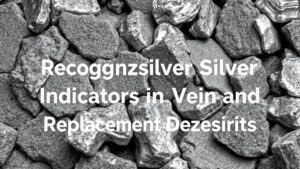Techniques for Locating Buried Gold Hoards in Dense Forests
Techniques for Locating Buried Gold Hoards in Dense Forests
Discovering buried gold hoards in dense forests can be a challenging yet rewarding endeavor. This article explores various techniques that adventurers and treasure hunters can employ to increase their chances of finding hidden wealth. By combining modern technology with traditional methods, seekers can effectively navigate and investigate forested areas.
Understanding the Landscape
Before embarking on a treasure hunt, it is crucial to understand the topography and ecology of dense forests. Forests are characterized by their complex interactions among flora and fauna, varying soil types, and diverse microclimates. This understanding aids in making educated guesses about where gold might be buried.
Urban legends and historical records often indicate that explorers and miners have buried their riches near sources of water, old trails, or even under established landmarks. Armed with this knowledge, seekers can prioritize these areas when planning their expeditions.
Advanced Tools for Treasure Hunting
The advent of technology has significantly enhanced treasure hunting capabilities. Here are some essential tools:
- Metal Detectors: Modern metal detectors are designed to detect a wide range of metallic objects. High-quality detectors can differentiate between types of metals, allowing hunters to focus on gold.
- Ground Penetrating Radar (GPR): This technology utilizes radar pulses to image the subsurface, revealing hidden objects without excavation. It can locate buried treasures effectively, especially in challenging terrains.
- Drones: Drones equipped with high-resolution cameras can survey vast areas of dense forest quickly. help in locating potential digging sites by providing aerial perspectives.
For example, in 2021, a team of treasure hunters in the Amazon rainforest successfully located ancient artifacts using GPR, showcasing the capability of such technology in dense vegetation.
Researching Historical Context
Conducting thorough historical research can provide clues about potential hoard locations. Many hoards are linked to historical events, migrations, or mining activities. Here are steps to undertake:
- Local Archives: Visit libraries and local historical societies to find maps and documents concerning past explorations and settlements.
- Online Databases: Use online resources like the National Archives or databases that document mining activities and treasure finds across different regions.
An excellent example is the story of the Lost Dutchman Gold Mine, which has led countless adventurers to search the Superstition Mountains in Arizona due to its rich history and numerous accounts of treasure. mix of historical research and local folklore guides seekers in their search.
Environmental Considerations and Safety
The pursuit of buried gold should align with environmental sustainability. Dense forests are ecosystems that require protection. While searching, consider the following:
- Permits: Always check for legal permits required for treasure hunting in forested areas, as regulations vary by region.
- Minimize Disruption: Use non-invasive techniques and tools to enhance your experience while ensuring minimal impact on the environment.
Also, safety is paramount. Dense forests can pose risks, including wildlife encounters and getting lost. Travelers should always carry emergency supplies, including GPS devices and maps, to ensure safe navigation.
Networking with Other Treasure Seekers
Connecting with other treasure hunters can provide invaluable information and resources. Consider joining forums, attending local meetups, or participating in treasure hunting clubs. Knowledge sharing can lead to discovering successful techniques and tips.
Also, collaboration can sometimes lead to joint expeditions, where pooling resources and knowledge increases the chances of success. For example, a group of members from the Maryland Treasure Hunters Association frequently organizes group hunts in wooded areas, leading to significant finds.
Conclusion: The Treasure Hunt Journey
Locating buried gold in dense forests is as much about the journey as it is about the destination. By employing advanced tools, conducting thorough research, and networking with fellow seekers, adventurers can enhance their probability of success. Also, maintaining environmental integrity and prioritizing safety ensures that the treasure hunt can be enjoyed by future generations.
As you prepare for your treasure-hunting expedition, remember to embrace the thrill of exploration and discovery–who knows what you might uncover in the heart of the forest?

